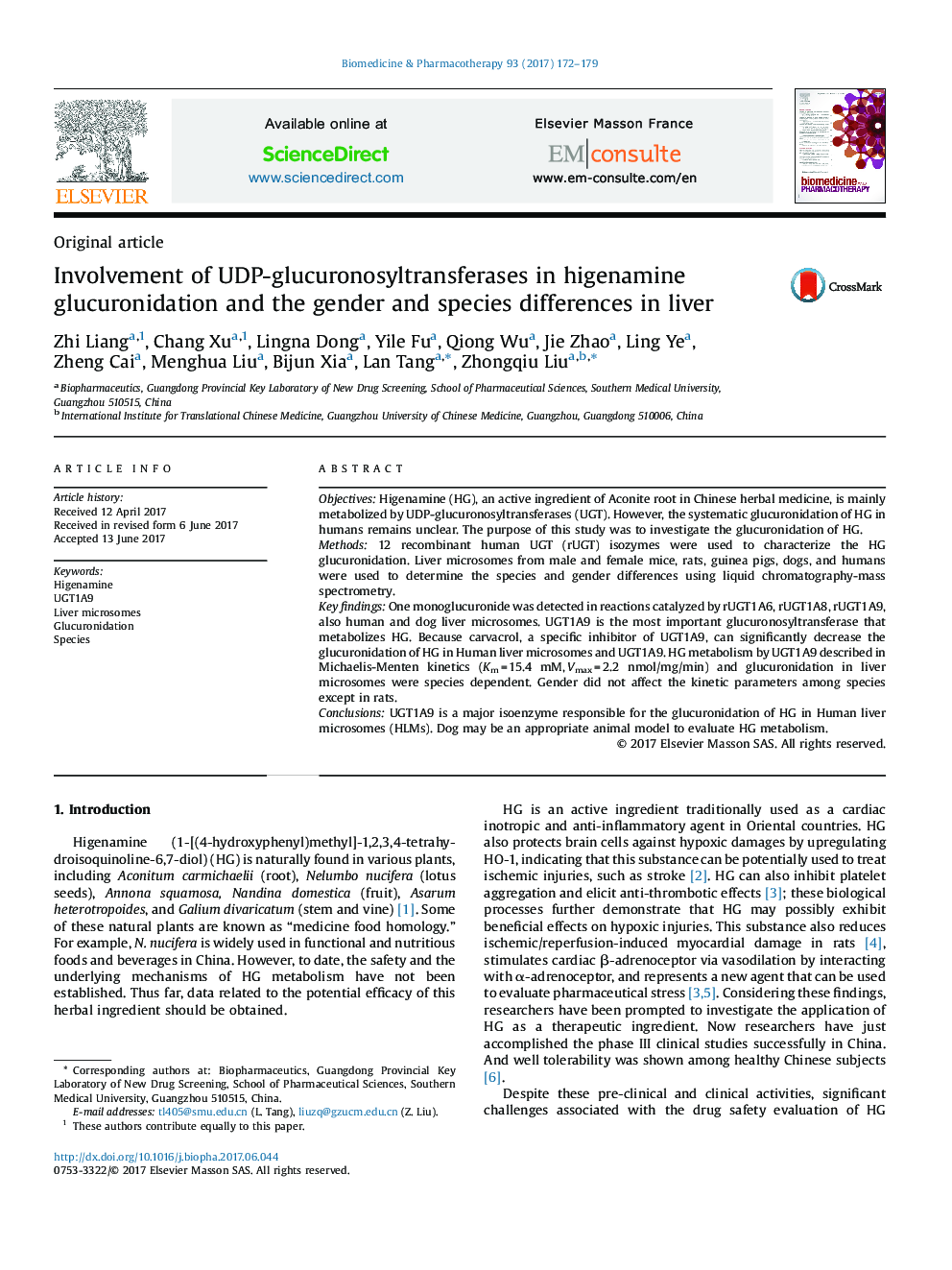| Article ID | Journal | Published Year | Pages | File Type |
|---|---|---|---|---|
| 5552629 | Biomedicine & Pharmacotherapy | 2017 | 8 Pages |
ObjectivesHigenamine (HG), an active ingredient of Aconite root in Chinese herbal medicine, is mainly metabolized by UDP-glucuronosyltransferases (UGT). However, the systematic glucuronidation of HG in humans remains unclear. The purpose of this study was to investigate the glucuronidation of HG.Methods12 recombinant human UGT (rUGT) isozymes were used to characterize the HG glucuronidation. Liver microsomes from male and female mice, rats, guinea pigs, dogs, and humans were used to determine the species and gender differences using liquid chromatography-mass spectrometry.Key findingsOne monoglucuronide was detected in reactions catalyzed by rUGT1A6, rUGT1A8, rUGT1A9, also human and dog liver microsomes. UGT1A9 is the most important glucuronosyltransferase that metabolizes HG. Because carvacrol, a specific inhibitor of UGT1A9, can significantly decrease the glucuronidation of HG in Human liver microsomes and UGT1A9. HG metabolism by UGT1A9 described in Michaelis-Menten kinetics (Km = 15.4 mM, Vmax = 2.2 nmol/mg/min) and glucuronidation in liver microsomes were species dependent. Gender did not affect the kinetic parameters among species except in rats.ConclusionsUGT1A9 is a major isoenzyme responsible for the glucuronidation of HG in Human liver microsomes (HLMs). Dog may be an appropriate animal model to evaluate HG metabolism.
